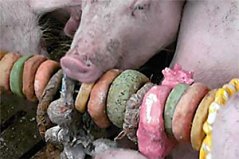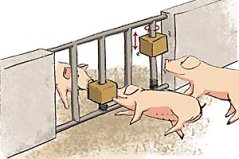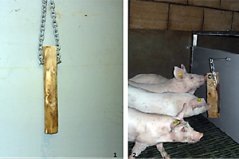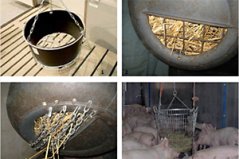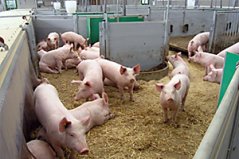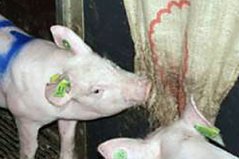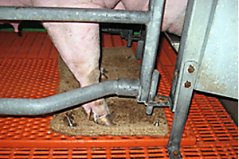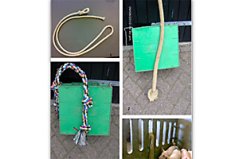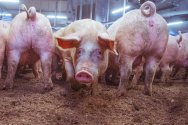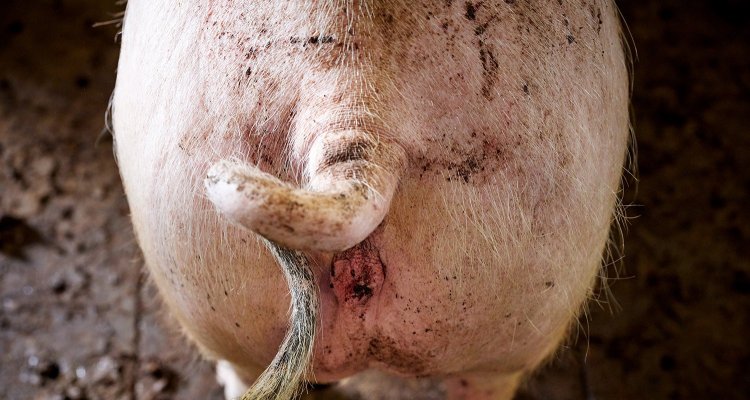
Dossier
Preventing tail biting in pigs
How can we prevent pigs biting each other's tails without having to resort to tail docking? Wageningen University & Research, Animal Welfare & Adaptation has a great deal of expertise with the aim of resolving biting problems in pig farming. These solutions contribute to the joint objective of the government and the sector to eventually be able to keep animals without the need for interventions.
Why do pigs bite each other?
Tail biting in pigs and other forms of biting are a response to boredom, insufficient stimulation and frustration. As a result a pig may become frustrated. For instance if the climate is not ideal, if too many animals are being kept in a small space or if there is something wrong with the composition of the feed or the way in which the feed is provided.
What are the effects of biting behaviour in pigs?
Biting can give rise to wounds. The taste of blood and the unease in the stall can lead to an escalation of the problem and other pigs starting to adopt the biting behaviour. It can even lead to cannibalism. Bite wounds may become infected, as a result of which growth may be inhibited and abscesses may occur, resulting in lameness, paralysis and even death of pigs.
Tail biting in pigs – even in the case of docked tailes – occurs at around 50% of all Dutch pig farms. It is estimated that tail biting costs the Dutch pig sector eight million euros every year.
Does tail docking of pigs still take place?
At present, almost 100% of pigs kept on traditional pig farms in the Netherlands have their tails docked in order to prevent tail biting. However, tail biting is still a major cost item even in pigs that have had their tails docked. From the point of view of animal welfare, tail docking is not desirable. Legally, it may not be done routinely, and agreements have been made with the sector to stop docking altogether from 2030. This is now being worked on.
How can we prevent tail biting in pigs?
Our research focuses primarily on eliminating boredom and frustration, the main causes of tail biting. It is clear that stall enrichment by means of providing all kinds of materials to keep pigs occupied helps to prevent tail biting. The research also addresses matters of housing, feeding, a characterisation of the tail biter and differences between breeds.
"Krulstaart" working group
At the initiative of LTO Nederland and the Dutch Society for the Protection of Animals (Dierenbescherming), a working group has been set up to address problems relating to biting within pig farming. These solutions contribute to the objective of eventually being able to keep animals without the need for interventions.
Read more
The "Krulstaart" working group comprises representatives from various interested parties within the pork chain: LTO, the Dutch Society for the Protection of Animals, veterinary surgeons, breeders, slaughterhouses, the animal feed industry and government bodies. Wageningen University & Research coordinates the process.
There is great motivation to address and resolve the problem. However, the biting problems are complex and dependent on many different factors. In recent years, we have not been able to prevent these problems occurring, and problems with animal well-being are therefore still seen.
The working group will explore the main factors influencing biting tendencies in greater detail, such as breeding, health, feeding, housing, climate and distractions. View the publications for more information on the results.
